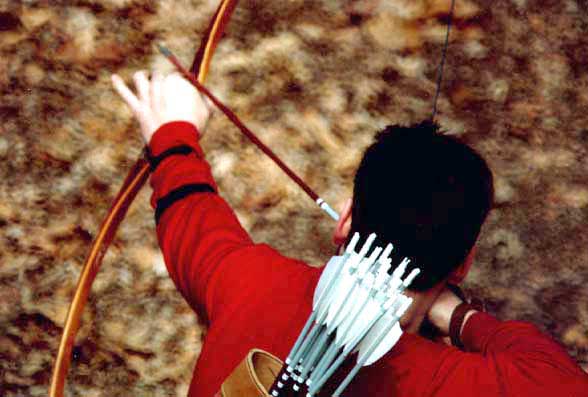 It ’s very important to know our own drawlenght, to could imagine which real power has a bow measured at the classics 28 inch, and to could have useful informations to project the perfect arrows.
It ’s very important to know our own drawlenght, to could imagine which real power has a bow measured at the classics 28 inch, and to could have useful informations to project the perfect arrows.
The operation is as useful as difficult, or at least, it seams so, if you judge how many people fall into error to value their own drawlenght.
And in the considerable number of people, I have spoken about the bow with, the fact that always left me more astonished is the tendency to consider a drawlenght superior.
A very high number of archer is convinced to extend 2 or 3 inch more than how they really do.
This isn' t sure the seat to trouble dr. Freud, in the search of an explanation, it' s enough for you to know that the typical position of the instinctive stile cause drawlenghts inferior as regards to those that are considered in the AMO schedules and pertinent to the free style.
Personally, I’m 1,85m tall, and I' m convinced that my drawlenght of 26 inch with the longbow and 27 and a half with the recurve, doesn' t represent an handicap for my archery abilities.
I think that the confusion is caused above all by the wrong habit of measure our own drawlenght bending a bow without shooting an arrow, or quite using those suitables bows with graded arrow that you can see in the hands of improvised instructor.
The reality is that the drawlenght can voluntarily swing also of 4 or 5 inch, but the only drawlenght that interests us is the one we will use for the real shoot, not that we would like to have.
The best way to know our real drawlenght is asking someone to spy upon us while we are shooting thoughtlessly, and to control how much the arrow sticks out.
I finish with a consideration, I hope useful: a short drawlenght consent under the same librae, to use shorter and lighter arrows, while a person that extends a lot is destinated to use heavier arrows.


Follow us